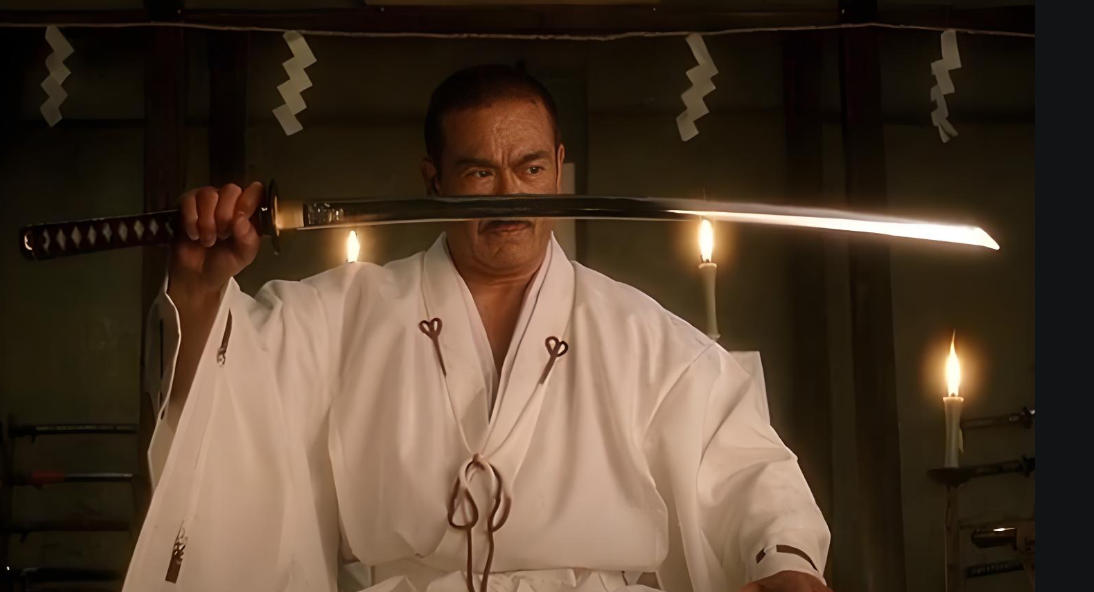Legend & Collection of Katanas: From Musashi, Hanzo to Modern Blades

How Did Katanas Evolve from Musashi and Hanzo Legends to Modern Collectibles?
In Japanese culture, a katana is more than a weapon—it is a symbol of spirit and craftsmanship. Whether it’s the Edo-period sword master Miyamoto Musashi or the legendary figure closely associated with ninjas, Hattori Hanzo (https://en.wikipedia.org), their stories with katanas make this traditional weapon full of legend. Today, with growing interest in samurai history Japan and craft culture, collectors and enthusiasts seek authentic katana from Japan and real katana from Japan.
What was Miyamoto Musashi famous for? The Sword Master Musashi
When discussing katanas, one cannot ignore Miyamoto Musashi (Miyamoto Musashi / Myamoto Musashi / Musahi), one of the most iconic figures in Japanese swordsmanship history.
Born in 1584 during the late Sengoku period, Musashi began practicing martial arts as a child. By age 13, he had already won duels against adult swordsmen, marking the start of his extraordinary life. Over the following decades, he traveled across Japan, participating in over sixty life-or-death duels, and never lost a match. His most famous duel was against Sasaki Kojiro at Ganryu Island, where Musashi, wielding a wooden long sword, defeated Kojiro, known for his long blade called 'Drying Pole,' becoming legendary overnight.
Musashi was not only a swordsman but also a thinker and artist. He founded the unique swordsmanship style Niten Ichi-ryu, emphasizing the simultaneous use of two swords, allowing for flexible and decisive tactics. This dual-sword style broke traditional single-sword limitations and influenced many later schools of swordsmanship.
In his later years, Musashi retired in Kyushu, Kumamoto, devoting himself to strategy and philosophy, and wrote the timeless work The Book of Five Rings (Go Rin No Sho). This book not only summarizes sword techniques but also explores the samurai spirit and strategic thinking. Its insights remain influential today, impacting swordsmanship as well as modern business and management practices.
Today, many people searching for musashi knives / musashi japan knives are looking for modern knives named after Musashi. These brands inherit the sharpness and craftsmanship of katanas, symbolizing Musashi’s swordsmanship spirit and samurai honor. In many ways, 'Musashi' has become synonymous with sword culture and legendary skill.
What type of sword did Miyamoto Musashi use?
1. Dual-Sword Style ('Niten Ichi-ryu')
Musashi’s most famous fighting style was Niten Ichi-ryu, the dual-sword technique.
He wielded a long sword (katana / tachi / uchigatana) in one hand and a short sword (wakizashi) in the other. While this combination was not uncommon among samurai, Musashi systematized it and mastered its use.
2. Katanas in Combat
According to The Book of Five Rings and other biographies, Musashi’s primary weapon was the katana, with a blade around 70 cm, the standard samurai battle sword. In some duels, he famously used a wooden sword (bokken), such as in his duel with Sasaki Kojiro, where he crafted a long wooden sword to defeat Kojiro’s “Drying Pole” (nodachi).
3. Types of Weapons Musashi Used
-
Katana (long sword): Main weapon, used with one or both hands.
-
Wakizashi (short sword): Used in close combat or alongside the katana.
-
Bokken (wooden sword / long wooden blade): Used in training and duels.
Legends suggest he may have also used naginata or other weapons, though evidence is limited.
4. Key Features
Musashi’s swords were not magical weapons; his victories relied on his exceptional skill and combat intelligence. His dual-sword style emphasized adaptability—turning even a wooden sword into a deadly weapon. Therefore, Musashi’s core weapons were katana and wakizashi, used in conjunction with his Niten Ichi-ryu sword techniques.

Is there a real Hattori Hanzo? The Legend of Hanzo
Yes, Hattori Hanzo (Hattori Hanzo / Hanzo Hattori / Hanzou Hattori) truly existed.
His birth name was Hattori Masanari (1542–1596), born in Iga Province (modern Mie Prefecture). He was a representative of Iga ninja and an important retainer of Tokugawa Ieyasu. Known for his exceptional skill and bravery, he commanded the Iga ninja, earning the nickname 'Oni Hanzo.'
Historically, Hanzo’s greatest achievement was escorting Tokugawa Ieyasu safely during the Honno-ji Incident, preserving Tokugawa’s power. Later, he was appointed leader of the shogun’s ninja forces, with his family serving the Tokugawa for generations.
However, in modern films, anime, and games, depictions of 'Hanzo Samurai,' 'Hanzo Ninja,' or the mysterious swordsmith 'Hanzo Knives' are artistic adaptations and not fully historically accurate. The real Hattori Hanzo was primarily a samurai and ninja commander, not just a legendary assassin or sword maker.
Hattori Hanzo in History
-
He was a loyal retainer and bodyguard of Tokugawa Ieyasu, leading Iga ninja forces in service of the shogun.
-
After the Honno-ji Incident, Hanzo famously escorted Tokugawa Ieyasu to safety, playing a critical role in the establishment of the Tokugawa Shogunate.
-
Hanzo excelled in swordsmanship, ninjutsu, and strategy, making him both a samurai and ninja leader—a dual role that made him unique among Sengoku-era warriors.
Hanzo in Popular Culture
In modern culture, Hattori Hanzo (Hattori Hanzo / Hanzo Hattori / Hanzou Hattori) has taken on a legendary and multi-dimensional persona far beyond historical records:
-
Hanzo Samurai
In films and novels, Hanzo is depicted as a loyal, calm, and intelligent samurai. As Ieyasu’s bodyguard, he symbolizes the bushido spirit and unwavering loyalty, allowing audiences to experience the ideals of honor and courage embodied in a samurai. -
Hanzo Ninja
As a leader of the Iga ninja, Hanzo is often portrayed as a stealthy, elusive assassin in movies, anime, and games. Known as a “blade in the shadows,” the Hanzo Ninja image has become one of the most recognizable symbols of ninja culture. -
Hanzo Knives
In modern media, Hanzo is sometimes imagined as a mysterious swordsmith. In films and anime, Hanzo Knives represents unmatched craftsmanship, producing katanas or ninja blades that are sharp, durable, and iconic. Though not historically accurate, this portrayal strengthens Hanzo’s cultural association with swords.
Hanzo’s evolving image—as loyal samurai, shadowy ninja, and legendary swordsmith—has made him a lasting icon, both in Japanese history and global popular culture.
Hanzo’s Influence and Collectibility
Today, searches for hanzo knives / hanzo samurai / hanzo ninja reflect more than interest in weapons—they seek a symbol of history and culture. Hanzo embodies the combination of Sengoku-era samurai spirit and ninja wisdom. Whether through romanticized media portrayals or collectible katanas and ninja swords, his name remains a key element in Japanese sword culture.
Handmade Japanese Katana Sword, Hattori Hanzo Sword High Manganese Steel Black Thunder Pattern Blade Backable Scabbard
-
Blade Material: Made of High Manganese Steel, renowned for its wear resistance, impact strength, and toughness—often used in industrial machinery. A highly durable material. COOLKATANA
-
Blade Pattern: Features a striking Black Thunder Pattern, offering both visual appeal and cutting performance. COOLKATANA+1
-
Forging Craftsmanship: Full tang construction with hand forged and hand polished finish for balance, toughness, and handling—suitable for practical use, not just display. COOLKATANA+1
-
Functionality: Suitable for light to medium cutting; also a striking display piece. COOLKATANA
-
Design: Includes a backable scabbard, ideal for cosplay or film props, inspired by the Hanzo sword in Kill Bill. COOLKATANA
From Battlefield to Art
Samurai Japanese history traces back to the Kamakura period, when samurai became Japan’s military and spiritual backbone. During the Sengoku period, the katana was a samurai’s soul—essential for close combat and a symbol of status. Its sharpness and durability were paramount for survival on chaotic battlefields.
During the peaceful Edo period, warfare declined, and the katana’s role shifted from practical weapon to symbol of status and honor. Samurai and collectors sought blades crafted by master swordsmiths, not only for combat but also for cultural and aesthetic value.
In crafting, katana making Japan involves precise techniques. Through folded steel forging, impurities are removed, and carbon is evenly distributed, creating blades that are strong yet sharp. Quenching and tempering determine hardness and toughness, producing the distinctive hada (grain) and hamon (blade pattern), making each katana a unique work of art.
This is why collectors and enthusiasts search for japanese sword makers / japanese sword maker / samurai sword makers japan, seeking authentic craftsmanship. Owning a handmade katana is a tribute to history, culture, and artistry.
Authenticity and Collecting
In the collector’s world, authentic katana Japan and real katana from Japan are highly sought-after. Unlike replicas, real Japanese swords carry historical and cultural value. Collectors often look for japanese authentic katana, ensuring the blade is crafted by a Japanese swordsmith.
Modern markets also offer replica designer online swords, ideal for display, cosplay, or film props.
Japanese Culture and Samurai Lifestyle
Beyond swords, items like japanese folding fan and traditional Japanese sake set are integral to samurai culture. Samurai valued aesthetics and etiquette, and these objects preserve cultural heritage. Collectors search for sake set made in Japan / Japanese sake set made in Japan for authentic traditional items.
Modern Collecting and Display
Interest in katanas continues to grow worldwide. Searches for samurai history of Japan / history of Japanese samurai / Japanese samurais often coincide with inquiries about purchasing, collecting, and displaying swords.
-
Umbrella Sword evokes the hidden and portable aspects of samurai weapons.
-
Samurai Shows in Japan offer cultural experience for tourists.
-
3 Samurai and similar media keep the katana relevant in modern culture.
In the collector’s market, keywords like musashi knives review / musashi japan knives indicate that modern knife brands leverage Musashi’s influence for collector appeal.
Conclusion: The Legacy of the Katana
From Miyamoto Musashi’s legendary duels to Hattori Hanzo’s ninja tales, from traditional katana making Japan to modern collectibles like authentic katana from Japan, the katana is more than a weapon—it is a symbol of Japanese culture and spirit.
Today, whether exploring samurai history Japan or collecting real katana from Japan, enthusiasts experience a rich history full of honor, artistry, and legend through the blade.








